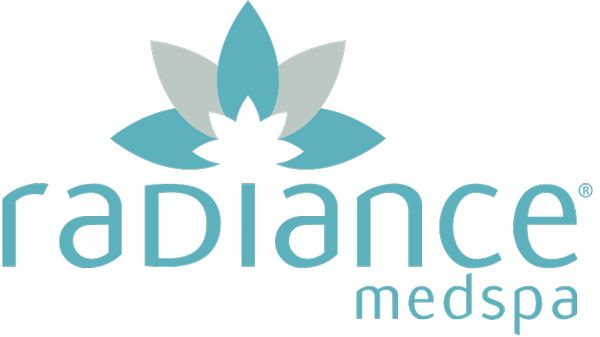![]() Original Article By Katie Becker
Original Article By Katie Becker
Discomfort and beauty are always in tension, so we teach ourselves the algorithm of: Is it worth it? We learn the calculations between ouch and better skin (or flatter abs, or a firmer jawline, or...). But you can't do the math without knowing what kind of pain you're in for. We went to the people who know best-the patients-to find out exactly what it feels like to be on the receiving end of all those needles, blades, and lasers.
*Pain Meter runs on a scale of 1-5.
Botox: An injectable neurotoxin used to temporarily paralyze facial muscles and smooth wrinkles.
The Patient Report: "I get it every four to six months to erase the etched lines on my forehead. Most doctors numb the area first with ice. I dislike that more than the needle-it's like a brain freeze. Each injection is quick; usually I don't feel a thing. But the area just underneath the eyebrows really hurts. Like a bee sting. The pain goes away immediately, though. Sometimes I get bruises that last a few days, but I can cover them with concealer. After a week or so, my brow feels a little heavy, like when your hand falls asleep. That's right around the time people start telling me I look really relaxed, as if I was just on vacation." -Andrea Modlin, 41
The Doctor's Note: "I put a little pressure on each injection site right afterward to help with the sting and get very anxious people to do Lamaze-style breathing. The muscles start to feel kind of stiff, once the Botox kicks in, about five days later. You get used to that after a week or so, and soon you almost forget how to frown. Research even shows that you'll actually feel happier." -Ava Shamban, a dermatologist in Beverly Hills
The Pain Meter: 1
Restylane and Juvéderm: Hyaluronic acid-based gels injected to restore contours and fullness to the face and lips.
The Patient Report: "My upper lip is much smaller than my lower one. I've gotten it filled with Restylane or Juvéderm twice a year for about six years. My first treatment was at a spa, and it was a horror story-they completely overfilled my lips, and it really hurt. I had to go to a doctor for another injection to undo it. Now I always go to a dermatologist. I don't use numbing cream, just close my eyes and center myself. The needle feels sort of like a splinter, but the pain doesn't linger. I think a paper cut is worse. My lips are a little swollen for a few hours, but by the next day, kissing and eating feel completely normal." -Elaine*, 31**
The Doctor's Note: "The lips are one of the most sensitive areas on the body, so sometimes we start with an injectable anesthetic. Icing first is often enough, though. Plus, the most commonly used fillers, like Juvéderm and Restylane, have numbing lidocaine mixed in. The temporary swelling of the gel might feel a little creepy but should never be painful. The swelling dissipates after about a week. And if a patient doesn't like the results, there's an exit strategy: We can inject an enzyme called hyaluronidase that breaks down the hyaluronic acid completely over a couple of days." -Shamban
The Pain Meter: 2
Kybella: Deoxycholic acid, a fat-dissolving chemical injected to reduce a double chin.
The Patient Report: "I'm skinny, but the fullness under my chin really bothered me. I went in for four Kybella sessions over six months. With the first two, they injected lidocaine before the acid, and I didn't feel anything after that. I thought the lidocaine increased my swelling afterward, though, so I skipped it for the last two. Without it, the acid felt like a deep, throbbing pain and burned for about 15 minutes. It wasn't unbearable, but it made my eyes water. There was swelling for a week-a couple days less when I didn't do the lidocaine-but not so much that people were staring at me. I just wore a scarf." -Jenny, 35
The Doctor's Note: "I start with a numbing cream, then draw a grid across the area of about 20 spots. I inject lidocaine in each one, followed by the Kybella. Once the lidocaine wears off, the area can be achy for a few hours and will sometimes bruise. One hundred-percent of patients have some swelling that can last up to two weeks." -Anne Chapas, a dermatologist in New York City
The Pain Meter: 3
Fraxel Dual Restore: A fractional CO2 laser that diminishes wrinkles, brown spots, scars, and pores.
The Patient Report: "I got a bad sunburn on my chest that left huge, dark sun spots. When a dermatologist suggested Fraxel, I went for it. She used a numbing cream first, but the pain was still an eight on a scale of one to ten. The first zaps weren't incredibly painful, but the pain kept building as she covered the area. It became almost unbearable. The whole thing took roughly 15 minutes, and once the laser was turned off, my chest felt like it was on absolute fire for an hour. After that, there was no pain. My skin was red for two weeks and felt rough as it healed. A month later, though, my chest had completely changed: The dark spots had radically lightened or disappeared." -Sarah, 24
The Doctor's Note: "The laser makes tiny holes in the skin, so it does create a pinprick-y feeling. We always start with lidocaine cream. We also use a Zimmer fan, which blows supercold air, and I give people squeezy stress balls. Afterward, you may feel badly sunburned for a day. By day three, your skin has a sandpapery texture that lasts a week or two." -Ellen Marmur, a dermatologist in New York City
The Pain Meter: 4
Ultherapy: An ultrasound-based technology for tightening skin on the face and body.
The Patient Report: "Over the last several years, I've done Ultherapy three times on my face and neck. The first time, I took Percocet beforehand for the pain, but it didn't help much. The doctor held the handpiece against my skin and delivered zaps from the middle of my neck to just above my jaw. With each one, there was an intense burning feeling that lasted two or three seconds. Pain-wise, it was an eight on a scale of one to ten. The next two times, I took Demerol; the pain was more like a three-I just felt a hot sensation every time there was a pulse. Afterward, my skin was slightly flushed, but I didn't need more painkillers. My jawline definitely looks tighter now." -Amanda, 42
The Doctor's Note: "I usually give Valium or Demerol, but some of my patients use no painkillers or sedatives at all. The machine delivers heat into the muscles that tighten up coils of collagen; it feels like a sparkler hitting your skin. We 'stamp' it across the face. Most of the time the pain is a four or five out of ten, but you get some zingers of nine. Treating the whole face takes a few hundred pulses-that can wear on you. Most patients see results in about a month." -Paul Jarrod Frank, a cosmetic dermatologist in New York City
The Pain Meter: 5
CoolSculpting: A freezing procedure shown to reduce fat on the abdomen, thighs, and upper arms.
The Patient Report: "I work out and eat well, but I had this ring of fat around my belly, like a life preserver, so I tried CoolSculpting. A vacuum-like contraption-around the size of an iPad mini-sucks in about two inches of your skin, which feels bizarre. The area starts to feel increasingly cold, but not painfully so...then you go numb. I didn't need an anesthetic or a painkiller. I did three areas-my love handles and the area below my belly button; each one took 45 minutes. The most uncomfortable part was sitting in the same position for three hours. Afterward, my skin was a little red and felt cold for a while, but I went to dinner that night and the gym the next day. About a month later, the life preserver was gone." -Allison, 28
The Doctor's Note:"The best candidates have fat that's 'squeezy'-not the hard, beer-belly type. If you make it through the first six minutes of the cold, you'll be fine. That's when you go numb. Afterward, we use a massaging device on the area. As the skin comes back to life, it feels sort of good-like your hands warming back up after a snowball fight. You might have some bruising and light soreness, but you can go straight back to work and working out. It takes two to six weeks to start seeing results, and some patients need more than one session." -Marmur
The Pain Meter: 1
Cellfina: A device with a small blade to sever the fibers under the skin that create cellulite.
The Patient Report: "You lie on your stomach, and the most painful part is the injection of the lidocaine. Once that kicks in, you can't feel anything. The blade's motorized, though, and the sound-like an electric knife-is jarring. I had 21 dimples treated across my butt and thighs; it took 45 minutes. The dimples were gone immediately. For 48 hours I had soreness, like after a workout, but it didn't hurt enough to even take Tylenol. The bruises lasted about ten days."-Mickey Williams, 42
The Doctor's Note: "The ideal candidate is under 50, so her skin has enough elasticity to spring back. The device-it looks like a petri dish-hovers over the area being treated and delivers a shot of lidocaine. Then a suction cup grabs the skin and inserts a tiny knife below the skin to cut the fiber that creates the dimple. The sound of the blade is a little disturbing; we offer noise-canceling headphones so you can listen to music. Most patients have tenderness and bruising afterward; improvements are visible in a few days." -Melanie Palm, a dermatologist in Solana Beach, California
The Pain Meter: 1

